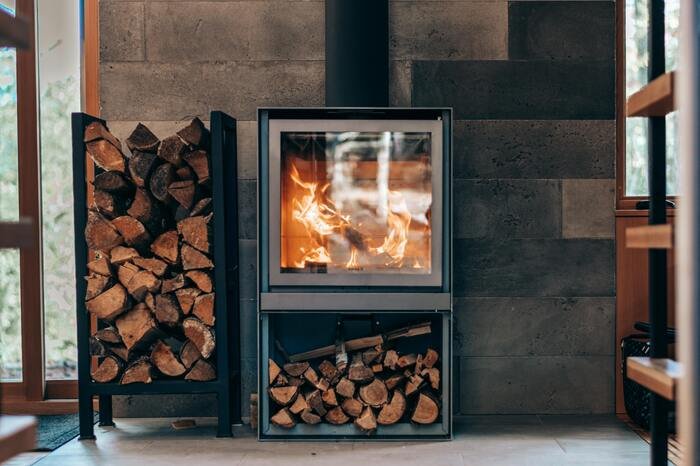Wood fuels have been a staple for heating homes and industries for centuries. As the world shifts towards more sustainable and renewable energy sources, wood fuels are often highlighted as a green alternative to fossil fuels. However, like all energy sources, wood fuels come with their own set of benefits and challenges, along with complex environmental implications. In this article, we will delve deeper into the advantages, disadvantages, and environmental impact of using wood fuels for heating.

What are Wood Fuels?
Wood fuels refer to flammable materials obtained from natural wood, including firewood, charcoal, briquettes, wood chips, pellets, and sawdust. They have been utilized as a traditional fuel source for heating purposes by various civilizations over the centuries. Wood fuels are commonly used in fireplaces, furnaces, boilers, and heaters to provide warmth. The origins of wood fuels can be traced back to ancient times when fires were lit inside tents and stone hearths in caves.
Wood fuels can be obtained by cutting down trees, collecting logs, and processing wood waste such as shavings, sawdust, and other biomass materials. They are considered renewable resources as trees can be replanted and harvested responsibly to ensure sustainability. Wood fuels serve as an eco-friendly alternative to fossil fuels, offering direct heating or electricity through burning or efficient combustion methods.
What are Examples of Wood Fuels?
Wood is the most commonly used combustion fuel for space and water heating, but there are various other types of wood fuels available in the market. Here are some examples along with their unique characteristics.
1. Timber and firewood: Timber is easy to obtain as it can be sourced from nearby woodlands or purchased from wood dealers. Homeowners can use seasoned firewood in their fireplaces, heaters, and boilers to keep their homes warm. Logs can also be used as fuel for traditional stoves in rural areas.
2. Wood chips: Smaller and more convenient to store and transport, wood chips are a great alternative fuel for many households. Homeowners can use wood chips to fuel boilers as they burn efficiently due to their uniform shapes and sizes. Wood chips are also suitable for automatic feeding into boilers, creating an efficient home heating system.
3. Wood pellets: Made from dry, compressed sawdust, wood pellets provide a free-flowing fuel alternative to logs and firewood. They are smaller than wood chips and can be purchased in bulk for storage. Wood pellets burn cleaner and are more energy-dense than most wood fuels on the market.
4. Briquettes: Biomass fuel sources are becoming more popular due to their versatility and eco-friendly nature. Briquettes made from wood shavings are favored by homeowners looking for a cleaner burning wood fuel that is easy to transport and store. They offer a more consistent burn and can replace logs in fireplaces, although they may lack the traditional look and feel of firewood.
5. Charcoal: Another biomass fuel, charcoal is produced by carbonizing wood through a slow heating process. Charcoal burns more efficiently than wood, providing warmth and an alternative fuel source. However, charcoal can produce a significant amount of smoke and is better suited for vented heating systems.
Advantages of Wood Fuels for Heating
Renewable and Sustainable Resources
Wood is a renewable resource that can be sustainably managed and replenished over time. When forests are managed responsibly, wood fuels can offer a sustainable and long-term energy solution. Sustainable forestry practices ensure that the rate of wood harvesting does not exceed the rate of forest regeneration.
Carbon Neutrality
One of the significant benefits of wood fuels is their carbon neutrality. The CO2 released during the combustion of wood is roughly equal to the amount absorbed by the trees during their growth. This cycle helps maintain a balance in atmospheric CO2 levels, unlike fossil fuels, which release carbon that has been sequestered for millions of years.
Economic Benefits
Local sourcing of wood fuels can bolster regional economies by creating jobs in forestry, processing, and transportation. It also reduces reliance on imported fossil fuels, promoting energy independence and stability.
Versatility in Use
Wood fuels are available in various forms, such as firewood, wood pellets, and wood chips, making them versatile for different heating applications. They can be used in traditional wood-burning stoves, modern pellet stoves, and industrial biomass boilers.
Energy Security
Utilizing locally sourced wood fuels enhances energy security by reducing dependence on international energy markets. This can be particularly beneficial for rural areas with abundant forest resources.
Disadvantages of Wood Fuels for Heating
Air Pollution Concerns
Combustion of wood can produce particulate matter, volatile organic compounds (VOCs), and other pollutants that may affect air quality and health. While modern, high-efficiency stoves and boilers can significantly reduce these emissions, older and less efficient systems can still pose significant air pollution risks.
Risk of Deforestation
Unsustainable logging methods may result in the depletion of forests, destruction of habitats, and a decline in biodiversity. It is crucial to ensure that wood fuels are sourced from forests managed according to sustainable practices to prevent ecological damage.
Inconsistent Energy Content
The energy content of wood can vary based on factors such as species, moisture content, and density. This variability can affect the efficiency and reliability of wood fuels as a heating source. Proper seasoning and storage of wood can help mitigate these issues.
Storage and Handling Requirements
Wood fuels require considerable storage space and must be kept dry to ensure efficient combustion. This can be inconvenient compared to more compact and easier-to-store fossil fuels or other forms of renewable energy.
Initial Costs
While wood fuel appliances can offer cost savings over time, the initial investment in modern stoves, boilers, and chimneys can be relatively high. This might be a barrier for some households.
Environmental Impact of Wood Fuels
Carbon Footprint
The carbon footprint of wood fuels includes emissions from harvesting, processing, transportation, and combustion. While wood is considered carbon neutral, these additional emissions must be accounted for. Sourcing wood locally and using energy-efficient processing techniques can help minimize the overall carbon footprint.
Air Quality and Emissions
The burning of wood fuels can release pollutants that impact air quality, including particulate matter and VOCs. Advanced combustion technologies and strict emission standards can significantly reduce these pollutants, but their adoption varies by region and technology availability.
Sustainable Forest Management
Effective forest management practices are essential to minimizing the environmental impact of wood fuel production. This includes replanting harvested areas, maintaining biodiversity, protecting soil and water resources, and ensuring that wood is harvested at a sustainable rate.
Habitat and Biodiversity Preservation
Harvesting wood for fuel can disrupt local habitats and wildlife. Sustainable harvesting practices are necessary to balance the demand for wood with the need to protect ecosystems and biodiversity. This involves careful planning to ensure that habitat destruction is minimized and that forest ecosystems remain intact.
Soil and Water Protection
Unsustainable logging can lead to soil erosion and water pollution. Sustainable forestry practices include measures to protect soil integrity and water quality, ensuring that forest ecosystems remain healthy and resilient.
Conclusion
Heating with wood fuels offers several advantages, including renewability, carbon neutrality, and economic benefits. However, it also presents challenges related to air pollution, deforestation, and energy content variability. The environmental impact of wood fuels depends significantly on how they are sourced and used. Sustainable practices and modern technologies can help maximize the benefits of wood fuels while minimizing their drawbacks. As with any energy source, it is crucial to consider the full lifecycle and environmental implications to make informed decisions about their use.
Frequently Asked Questions
1. Is heating with wood fuels truly carbon neutral?
Heating with wood fuels is considered carbon neutral because the CO2 released during combustion is roughly equal to the amount absorbed by the trees during their growth. However, the full carbon footprint also includes emissions from harvesting, processing, and transportation. Sourcing wood locally and using efficient processing methods can help maintain this carbon neutrality.
2. How can the air pollution from wood fuels be minimized?
Air pollution from wood fuels can be minimized by using modern, high-efficiency stoves and boilers that are designed to reduce emissions. Regular maintenance of these appliances, proper seasoning of wood, and using dry wood with low moisture content also help reduce particulate matter and other pollutants. Additionally, following local regulations and guidelines on wood burning can further mitigate air quality impacts.
3. What are the best practices for sustainable wood fuel sourcing?
Best practices for sustainable wood fuel sourcing include:
- Sustainable forest management: Ensuring that the rate of wood harvesting does not exceed the rate of forest regeneration.
- Certification: Using wood from forests certified by organizations like the Forest Stewardship Council (FSC) or the Programme for the Endorsement of Forest Certification (PEFC).
- Local sourcing: Reducing transportation emissions and supporting local economies by sourcing wood fuels locally.
- Replanting and biodiversity protection: Replanting harvested areas and protecting local biodiversity and ecosystems during the harvesting process.





Very interesting points you have noted, appreciate it for putting
up.Raise your business
Thank you so much for your comments.